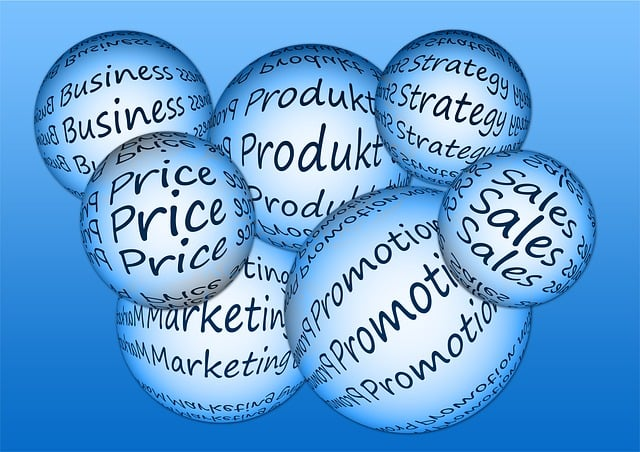Price is not just a number on a tag; it is the art of perception and value creation.
In marketing, price is the delicate balance between affordability and perceived worth. It is the strategic tool that shapes consumer behavior and influences purchasing decisions.
As marketers, we must understand that price is not a standalone element but an integral part of the overall brand experience. It communicates the quality, exclusivity, and desirability of a product or service. Remember, the right price can ignite desire, create loyalty, and ultimately drive sales.
So, let us master the art of pricing and unleash its potential to captivate our audience and fuel business success.
– Julius Ekhart, Marketing Extraordinaire @Grolli
Unlocking Success through a Powerful Pricing Strategy
In today’s highly competitive market, a well-crafted pricing strategy can make all the difference in the success of your business. As a skilled digital marketing strategist, I understand the importance of choosing the right pricing approach to maximize profitability and attract customers.

From value-based pricing to cost plus pricing, there are various strategies that can be tailored to meet your unique business needs. With my expertise, I can guide you towards the most effective pricing strategy that aligns with your goals and target audience.
By analyzing market trends and conducting thorough research, I can help you identify the optimal price range for your products or services. Whether it’s implementing a competitive pricing approach or utilizing penetration pricing to gain market share, I will ensure that your pricing strategy is both compelling and sustainable.
But it’s not just about setting the right price in marketing; it’s about communicating the value your products or services bring to your customers. With my marketing strategy expertise, I can help you craft persuasive messaging that highlights the benefits and value proposition of your offerings.
Together, we can unlock the potential of your business through a powerful pricing strategy. Let’s optimize your pricing approach and position your brand as a leader in your industry. Contact me today to take the first step towards greater profitability and success.
– Hannah Gourte, Digital Marketing Strategist @Sarfe
Driving Success with the Perfect Pricing Model
In the ever-evolving marketing industry, choosing the right pricing strategy can be a game-changer for your business. As a pricing expert at Technocolor, I have witnessed firsthand the impact that different pricing strategies can have on the bottom line.
From promotional pricing to everyday low pricing, there are a plethora of strategies available to capture the attention of your target audience and maximize profits. With my deep understanding of the common pricing strategies employed in the market, I can help you navigate through the options and identify the perfect approach for your business.
By analyzing market trends and consumer behavior, I can assist you in crafting a pricing strategy that aligns with your goals and sets you apart from the competition. With my expertise, we can determine the optimal price in marketing range that balances profitability with customer value.
In the dynamic landscape of the marketing industry, it’s crucial to stay ahead of the curve and adapt your pricing strategy accordingly. Together, we can develop a comprehensive plan that ensures your pricing remains competitive and resonates with your target audience.
– Marian Glica, Pricing Expert @Technocolor
Consider customer values when determining the right pricing approach.
My name is Barbara Imais, and I have dedicated my career to helping businesses navigate the complexities of pricing. I firmly believe that pricing based on customer values is the key to long-term success.

While it may be tempting to set a higher price in order to maximize profits, I understand the potential pitfalls of such a strategy. Instead, I advocate for a value-based pricing approach. By understanding what your customers truly value and aligning your pricing accordingly, you can establish a stronger connection with them and build loyalty.
Psychological pricing techniques can also play a significant role in shaping consumer perception and driving sales volume. Using strategies such as odd-number pricing or tiered pricing can create a sense of value and encourage customers to make a purchase. It’s important to carefully analyze your target market and customers to determine the most effective pricing strategy for your business.
In today’s competitive landscape, gaining market share is a top priority for many businesses. To achieve this, it may be necessary to implement pricing strategies that focus on competitive pricing or offering discounts to attract new customers. By understanding the dynamics of your target market, you can make informed decisions that help you gain a larger share of the market.
In conclusion, my expertise in pricing strategy enables me to guide businesses towards making informed decisions that align with customer values. By carefully considering market dynamics, target customers, and desired sales volume, we can work together to implement effective pricing strategies that drive success.
– Barbara Imais
Economy Pricing: The Key to Market Leadership in a Cost-Sensitive Environment
By Dr. Emily Rostova, Pricing Strategy Expert and Author of “The Price of Success”
In the dynamic world of pricing strategies, economy pricing stands out as a crucial element for businesses aiming to secure market share in cost-sensitive segments. As a seasoned expert in pricing models and marketing strategy, I’ve observed the transformative impact of economy pricing on various industries, particularly in sectors like mobile phones and high tech products.
Economy pricing, often misunderstood as merely setting a lower price, is a sophisticated pricing method that balances production costs, profit margins, and customer values. It’s not just about offering low prices; it’s about understanding the total expenses involved in bringing a product or service to market and setting a price in marketing that appeals to a broad customer base while maintaining a sustainable profit margin.

One of the common pricing strategies that align with economy pricing is everyday low pricing. This approach, when combined with aggressive pricing tactics, can significantly undercut direct competitors, offering a competitive edge especially in markets where price is a major decision factor for customers. However, it’s crucial to ensure that this strategy doesn’t lead to a situation where companies lose money or compromise on brand equity.
Incorporating economy pricing into the marketing mix requires a deep understanding of market conditions, target customers, and competitors’ prices. Market research plays a pivotal role in determining the right selling price. For instance, in the mobile phone industry, where product life cycle is short and competition is fierce, adopting an economy pricing strategy can attract more customers and quickly gain market leadership.
Another aspect to consider is the perceived value. While economy pricing focuses on low prices, it should not diminish the perceived value of the product. Strategies like price skimming or premium pricing might seem contradictory to economy pricing, but they can be used effectively during different stages of a product’s life cycle to maximize revenue and market share.
Dynamic pricing strategy, which adjusts price in marketing based on market demand and competition based pricing, can also complement economy pricing. By continuously monitoring market trends and adjusting prices accordingly, businesses can stay competitive and relevant.
In conclusion, economy pricing is more than just setting a low price in marketing; it’s a comprehensive pricing structure that considers variable costs, fixed percentage markups, and customer expectations. As businesses strive for market leadership, adopting an economy pricing model, while balancing cost plus pricing and value based pricing strategies, can lead to a successful marketing strategy that resonates with existing customers and attracts new ones.
Dr. Emily Rostova, Pricing Strategy Expert
Cost Plus Pricing: Balancing Value and Costs for Sustainable Growth
By Jonathan Clarke, Pricing Strategy Consultant and Author of “Profitable Foundations”
In the intricate landscape of pricing strategies, cost plus pricing emerges as a fundamental approach, especially for businesses seeking a straightforward and transparent method to determine product prices. My extensive experience in developing pricing strategies for diverse industries has reinforced my belief in the effectiveness of cost plus pricing, particularly when it is thoughtfully integrated into a company’s overall marketing mix.

Cost plus pricing, at its core, involves adding a markup to the total cost of producing a product or service. This method ensures that all production costs are covered, and a predetermined profit margin is achieved. It’s a strategy that offers simplicity and clarity, both for the business and its customers. By focusing on the company’s costs and adding a fixed percentage, businesses can set a unit price that guarantees profitability while maintaining a competitive edge.
However, it’s crucial to balance cost plus pricing with customer values. In today’s market, where customer expectations are high, pricing strategies need to be more nuanced. Value based pricing, which considers the perceived value of a product or service to the customer, can complement cost plus pricing. This combination ensures that prices are not only based on costs but also on the value delivered to the customer.
In sectors where premium pricing is the norm, such as high-end technology or luxury goods, cost plus pricing can serve as a foundation for setting a higher price point. This approach ensures that the price reflects the quality and exclusivity of the product, aligning with the customer base’s expectations for premium offerings.
Conversely, in markets where competition is intense, and economy pricing is prevalent, cost plus pricing can help maintain a lower price while ensuring profitability. It’s a practical approach in situations where penetration pricing is used to enter a new market segment or during promotional periods like free trials.
One of the key advantages of cost plus pricing is its transparency in accounting segments. It allows businesses to clearly articulate the rationale behind their pricing to stakeholders and customers. This clarity is particularly beneficial when justifying a price increase due to rising production costs or when breaking even is a critical short-term objective.
However, businesses must be cautious not to rely solely on cost plus pricing. In markets where competition based pricing or price skimming strategies are prevalent, sticking rigidly to cost plus pricing might lead to missed opportunities or pricing out of the market. It’s essential to continuously monitor market trends and adjust the pricing strategy accordingly.
In conclusion, cost plus pricing is a valuable tool in a company’s pricing strategy arsenal. When combined with insights from value based pricing and market conditions, it can lead to a balanced and effective approach to pricing. This strategy ensures that businesses cover their costs, achieve desired profit margins, and remain responsive to their customer base’s evolving needs and values.
Jonathan Clarke, Pricing Strategy Consultant
Value Based Pricing Strategy: Maximizing Worth and Profitability in Pricing Strategies
By Helena K. Torres, Strategic Pricing Analyst and Lecturer on Market Dynamics
In the realm of pricing, the value based pricing strategy stands as a beacon for businesses aiming to align their product price with the perceived value to the customer. As a strategic pricing analyst, I have witnessed the transformative power of this approach across various industries, particularly in its ability to justify a high price point while ensuring customer satisfaction and loyalty.
Value based pricing strategy diverges from traditional price based or markup pricing methods. Instead of focusing solely on the costs incurred or a fixed markup, this strategy delves into understanding the value a product or service provides to different account segments. By identifying and charging customers based on the value they perceive, businesses can set prices that customers are willing to pay, often at a premium.
This approach requires a deep understanding of customer needs and preferences. It’s about segmenting the market and tailoring the pricing to each segment’s unique value perception. For instance, in high-end markets where customers seek exclusivity and premium quality, a value based pricing strategy can justify a high price point, aligning the product price in marketing with the perceived prestige and quality.
One of the key advantages of this strategy is its flexibility. Unlike rigid cost-plus methods, value based pricing allows for dynamic adjustments. A skimming strategy, for example, can be employed where prices are initially set high and gradually lowered to capture different layers of the market, maximizing profitability at each stage.
However, implementing a value based pricing strategy is not without its challenges. It requires thorough market research to understand customer perceptions and the break even point for each segment. Businesses must be adept at communicating the value of their product or service to justify the price, especially when it’s higher than the competition.
Moreover, this strategy demands continuous adaptation. As market conditions change and new competitors emerge, the perceived value of a product or service can shift. Businesses must be agile, ready to adjust their pricing to reflect these changes.
In conclusion, a value based pricing strategy offers a powerful tool for businesses to maximize both their value proposition to customers and their profitability. By focusing on the value delivered rather than just the cost incurred, companies can achieve a competitive advantage, ensuring that their product price resonates with their target customers and sustains their business goals.
Helena K. Torres, Strategic Pricing Analyst
Navigating the Nuances of Cost Plus and Competitive Pricing Strategies
By Alexander Reed, Marketing and Pricing Strategy Expert
In the intricate world of pricing, understanding the nuances of cost plus pricing and competitive pricing is essential for businesses aiming to optimize their marketing mix and effectively charge customers. As a marketing and pricing strategy expert, I’ve seen how a blend of these approaches, tailored to specific market conditions and customer values, can significantly impact a company’s success.
Cost plus pricing is a straightforward approach where businesses add a markup to the variable costs of producing a product. This method ensures that all costs are covered and a profit is made. It’s particularly effective in industries where production costs are clear and stable. However, this strategy often overlooks the perceived value of the product to the customer, which can lead to either underpricing or overpricing in relation to the market.
On the other hand, competitive pricing involves setting prices based on competitors’ strategies and prices. It’s a dynamic approach that requires constant market surveillance. Competitive pricing is crucial in markets with intense competition and a well-informed customer base. It helps businesses to stay relevant and attractive to customers who are price-sensitive.
Penetration pricing is a strategy often used in conjunction with competitive pricing, especially when entering a new market or launching a new product. By setting a lower price in marketing, businesses can attract a significant portion of the customer base, aiming to increase prices gradually once a market presence is established.
Economy pricing, a subset of penetration pricing, involves setting a lower price point to attract the most price-sensitive customers. This approach can be effective in mass markets but risks reducing the perceived value of the product.
A more nuanced approach is the skimming strategy, which is particularly relevant when introducing innovative or high-end products. Initially, the product price is set high, targeting customers who value innovation and are less price-sensitive. Over time, as the market saturates, prices can be lowered to attract a broader customer base in price in marketing.
Incorporating a value based pricing strategy can complement these approaches. By understanding and aligning with customer values, businesses can justify a higher price for their products, especially when their offerings have unique features or benefits that are highly valued by customers.
Ultimately, the choice of price strategy should be a balanced decision, considering both the cost of production and the market dynamics. It’s about finding the sweet spot where the price in marketing reflects the value perceived by the customer, covers the costs, and remains competitive.
In conclusion, a successful pricing strategy is not about choosing one approach over another; it’s about blending different strategies like cost plus pricing, competitive pricing, and value based pricing to suit specific market conditions and customer expectations. This holistic approach ensures that the product price is right, the customer base is satisfied, and the business remains profitable and competitive.
Alexander Reed, Marketing and Pricing Strategy Expert



